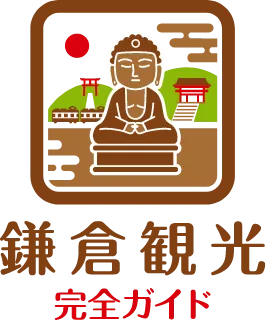About Kamakura Culture
Japanese heritage
“Let’s go to Kamakura”
Digest video
For a deeper understanding of Kamakura's attractions, please watch the Japanese Heritage "Isa, Kamakura" Digest video. In this video, the history and features of Kamakura are introduced in digest form.
Please enjoy this digest video before you start your journey of Kamakura's history and culture with this guide and "Toshi's Kamakura Sightseeing Map".
-
samurai culture
Kamakura is known as the birthplace of the samurai culture; the Kamakura shogunate was established at the end of the 12th century, marking the beginning of the samurai era. Bushido was formed during this period and emphasized a spirit of valuing virtues such as honor, loyalty, and courage. In Kamakura, there remain many works of art and architecture that reflect the samurai culture. For example, Zen temples such as Engakuji Temple and Kenchoji Temple symbolize the spirit of the samurai who were frugal and sturdy. In addition, the streets of Kamakura strongly reflect the lifestyle and culture of the samurai of the time. The aesthetics and values of the samurai continue to have a profound influence on Japanese culture and history to this day.
-
Influence of Zen Buddhism
During the Kamakura period (1185-1333), Zen Buddhism was introduced from China and many Zen temples were built. The background for the spread of Zen Buddhism during this period was the rise of the samurai class. The samurai, sympathizing with the spirit of the samurai who mastered the martial arts through training and with the practical and rigorous teachings of Zen, embraced Zen as part of their own spiritual cultivation.
Zen temples were not merely religious institutions, but also served as cultural centers. Calligraphy, painting, and garden design developed at Zen temples, and these arts had a profound influence on later Japanese culture. For example, famous Zen temples such as Kenchoji and Engakuji were important not only for Zen practice, but also as places for academic and artistic exchange.
Today, many Zen temples still remain in the city of Kamakura, attracting visitors not only as historical monuments but also as tourist destinations. These temples have a quiet and solemn atmosphere that evokes the spirit of Zen in visitors. In this way, Zen Buddhism is deeply rooted in the landscape and culture of Kamakura.
The Zen teachings seek inner peace through a deeper understanding of impermanence and selflessness, and this became a spiritual prop for warriors who survived the war-torn times. Zen temple gardens also embodied the spirit of Zen, which emphasized tranquility, and had a great influence on the Japanese garden culture of later generations. The Zen temples of Kamakura still retain their beauty and spirituality, and continue to deeply impress visitors. -
Literature and Art
The Kamakura period not only saw the birth of literary works such as "Tales of the Heike" and "Tsurezuregusa," but also a period of notable development in terms of arts and crafts. Unkei, a sculptor active during this period, is known for his realistic Buddhist statues, which are considered one of the greatest masterpieces in Japanese Buddhist art. The wood craft known as Kamakura carving also flourished during this period and is characterized by its fine and delicate carving techniques. Unkei's Buddhist statues and Kamakura period carvings are a precious legacy that conveys the spirituality and high level of artistic skill of the Kamakura period, and through these works we can sense the cultural maturity of the Kamakura period.
Even in the modern age, Kamakura has been loved by many writers and has greatly influenced their works. For example, great writers such as Soseki Natsume, Ryunosuke Akutagawa, and Yasunari Kawabata stayed in Kamakura and were inspired by its beautiful natural environment and historical background. Kawabata Yasunari, in particular, is known for his novel "The Sound of Mountains," which is set in Kamakura, and his works strongly reflect the scenery and atmosphere of Kamakura. In addition, writers known as "Kamakura literati" contributed to the development of Japanese literature by holding literary salons and mutually stimulating each other. Kamakura has continued to play a role as a center of literature and art from ancient times to the present day.
